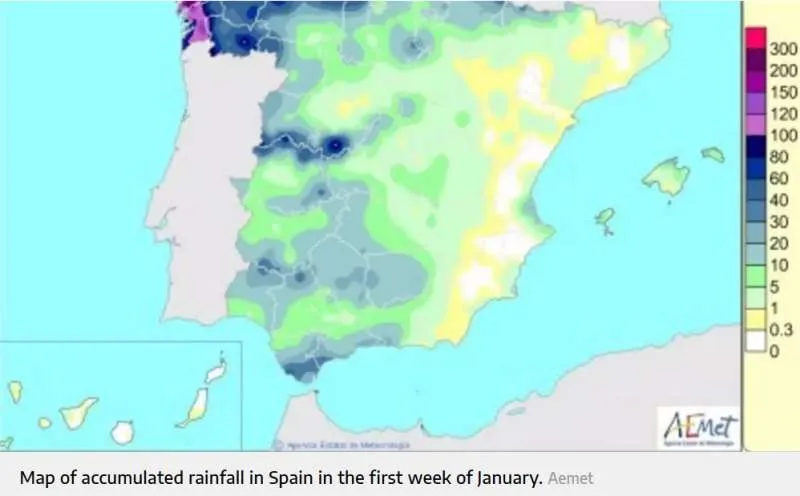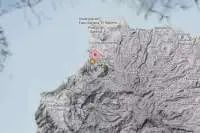Rainfall levels in the Canary Islands below average since October
- 11-01-2025
- National
- AEMET .
- Photo Credit: CW
Rainfall across the Canary Islands since the start of the hydrological year (October 1st, 2024) has been below the average for the reference period 1991–2020, according to the Spanish Meteorological Agency (AEMET).
This shortfall reflects a broader trend, as cumulative rainfall across Spain is also below expectations.
From October to January 7th, 2025, Spain recorded an average of 222 litres per square metre (l/m²) of rainfall, almost 10% less than the normal value of 241 l/m² for the period.
Several regions, including much of the northwest peninsula, parts of Catalonia, Extremadura, southern and eastern Castilla-La Mancha, and areas of Murcia, Alicante, and Albacete, are experiencing below-average rainfall. The southeastern coast of Andalusia is similarly affected.
Conversely, the northeastern quadrant of the peninsula has exceeded average precipitation levels. Notably, areas such as Valencia, and southern Castellón have recorded rainfall levels more than double the typical values.
In the Canary Islands, rainfall remains below normal across most areas, except for the northwestern region of La Palma. The Balearic Islands also report below-average rainfall, apart from the southern half of Mallorca.

During the week of January 1st–7th, rainfall was recorded in most parts of Spain, excluding some areas of the Levantine coast and the eastern Canary Islands, as well as inland Tenerife.
Notable rainfall included over 10 l/m² in many areas of the western peninsula, the Valencian coastline, and isolated locations in Mallorca and Menorca. The heaviest precipitation occurred in Galicia, where some locations in A Coruña and Ourense reported more than 300 l/m².
Observations from primary meteorological stations highlighted significant rainfall totals:
- Vigo/Peinador: 100 l/m²
- Santiago de Compostela/Labacolla: 96 l/m²
- Pontevedra: 80 l/m²
- A Coruña: 67 l/m²
- A Coruña/Alvedro: 60 l/m²
- Lugo/Rozas: 40 l/m²
On January 8th, heavy rainfall of over 60 l/m² was recorded in western Galicia and the Sierra de Grazalema.
The below-average rainfall raises concerns about water resource management and agricultural impacts, particularly in regions dependent on consistent precipitation, such as the Canary Islands.
With the hydrological year still underway, meteorologists and authorities will continue monitoring precipitation patterns to assess potential long-term effects.
Other articles that may interest you...
Trending
Most Read Articles
Featured Videos
A Vision of Elvis Tenerife Promo
- 10-05-2025
Tenerife Travel Guide
- 13-12-2024
Live webcam from Lanzarote airport
- 13-12-2024




























































